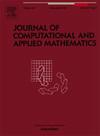The role of health in consumption and portfolio decision-making: Insights from state-dependent models
IF 2.1
2区 数学
Q1 MATHEMATICS, APPLIED
Journal of Computational and Applied Mathematics
Pub Date : 2024-09-30
DOI:10.1016/j.cam.2024.116290
引用次数: 0
Abstract
In this paper, we study an optimal consumption and asset allocation problem accounting for the fact that individuals’ utility differs across various health states. Our study is based on the assumption that an individual’s health status evolves through a semi-Markov process, where the transition probabilities are contingent on both the present state and the duration spent in that state. The optimal form of stock investment and of consumption is determined analytically. The optimal consumption level is significantly shaped by the integration of health-related factors and can be represented as the inverse of the marginal utility function with respect to time and state price density. Additionally, we introduce a Lagrangian multiplier that can be derived by solving a fixed point problem. While our optimal solutions are applicable to a wide range of utility functions, we provide numerical illustrations specifically using the power utility function in a model encompassing three distinct health states. Transition probabilities are estimated from real data collected by the China Insurance Regulatory Commission (CIRC), using a high-order polynomial Perks formula. We find that the investor’s consumption is higher when health is good, but lower when care is needed.
健康在消费和投资组合决策中的作用:国家依赖模型的启示
在本文中,我们研究了一个最优消费和资产分配问题,其中考虑到了个人在不同健康状况下的效用不同这一事实。我们的研究基于这样一个假设,即个人的健康状况是通过半马尔可夫过程演变而来的,其中过渡概率取决于当前状态和在该状态下的持续时间。股票投资和消费的最优形式是通过分析确定的。最佳消费水平在很大程度上受健康相关因素的影响,可表示为边际效用函数与时间和状态价格密度的倒数。此外,我们还引入了拉格朗日乘数,该乘数可通过解决定点问题得出。虽然我们的最优解适用于多种效用函数,但我们在一个包含三种不同健康状态的模型中,使用幂效用函数进行了具体的数值说明。过渡概率是根据中国保险监督管理委员会(CIRC)收集的真实数据,使用高阶多项式 Perks 公式估算得出的。我们发现,当健康状况良好时,投资者的消费较高,但当需要护理时,消费较低。
本文章由计算机程序翻译,如有差异,请以英文原文为准。
求助全文
约1分钟内获得全文
求助全文
来源期刊
CiteScore
5.40
自引率
4.20%
发文量
437
审稿时长
3.0 months
期刊介绍:
The Journal of Computational and Applied Mathematics publishes original papers of high scientific value in all areas of computational and applied mathematics. The main interest of the Journal is in papers that describe and analyze new computational techniques for solving scientific or engineering problems. Also the improved analysis, including the effectiveness and applicability, of existing methods and algorithms is of importance. The computational efficiency (e.g. the convergence, stability, accuracy, ...) should be proved and illustrated by nontrivial numerical examples. Papers describing only variants of existing methods, without adding significant new computational properties are not of interest.
The audience consists of: applied mathematicians, numerical analysts, computational scientists and engineers.

 求助内容:
求助内容: 应助结果提醒方式:
应助结果提醒方式:


